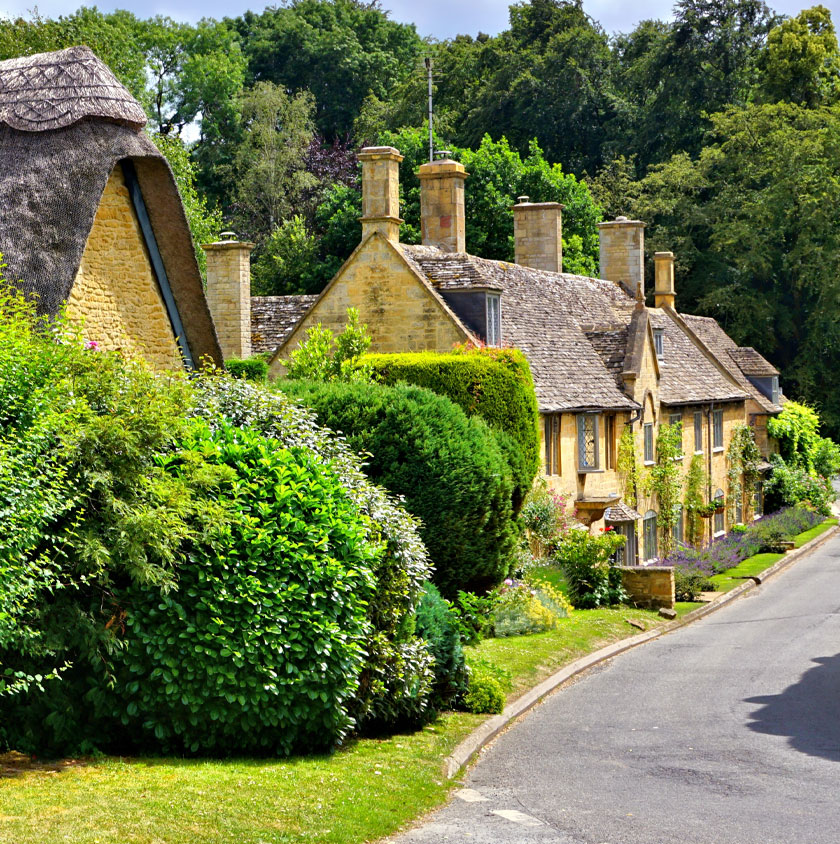
Non-Standard Home Insurance
Compare Non-Standard Home Insurance Quotes
- Complete one short form
- Quickly compare quotes
- Find a great deal today

Policies and deals from leading insurance providers, including
Why Compare Non-Standard Home Insurance At SimplyQuote.co.uk?
At SimplyQuote, through our partnership with Quotezone, we understand how confusing, frustrating, and time-consuming it can be to compare non-standard home insurance quotes. The complexities of this specialist cover can feel overwhelming.
That’s why the free online comparison tool is designed to simplify the process. Easily explore multiple quotes from leading UK insurers in just a few clicks.
What Do You Need To Get A Quote?
When requesting a quote for non-standard insurance, you’ll be asked to provide the following information:
- Personal details – e.g. name, address, contact info.
- Property details – e.g. materials used to construct the exterior walls and roof, when the home was built, estimated rebuild cost, history of subsidence or flooding, information about any water sources or large trees nearby.
- Policy details – e.g. the level of cover you want, when you want the policy to start.
- Insurance details – e.g. claims history, supporting documentation for the insurance applications (such as fire-retardant spray certification for thatched roofs).
Note: Listed buildings must specify the type of listing (Preservation Order, Grade 1 or Grade 2).
Why Do You Need Non-Standard Home Insurance?
You will need non-standard home insurance to cover damage to properties that are made from unusual construction materials. Repairs for non-standard homes rely on specialist services, tools and materials that are not covered by standard insurance.
Non-standard homes are constructed using materials other than brick and stone, with a slate or tile roof. They can be made from:
- Steel frames
- Timber frames
- Prefabricated reinforced concrete
- Corrugated iron (roof)
- Thatch (roof)
This type of insurance also provides cover for houses built in known flood-risk areas.
Non-standard home insurance is suited to personal circumstances, including:
- A person who has declared bankruptcy
- Has a past criminal conviction
- May have been denied home insurance previously
- Has insurance on more than one property
This specialist insurance is required as homes that fall into the non-standard categories tend to:
- Require more maintenance
- Use uncommon techniques or unusual construction materials and specialists for maintenance
- Have a higher risk of fires
- Be more prone to pest infestations
- Be more prone to rotting
For these reasons, non-standard home insurance is more expensive.
In the UK it is not a legal requirement for non-standard structures to have this specialist insurance. However, standard home insurance may not provide adequate financial cover.
Who needs non-standard home insurance in the UK?
- Unoccupied properties
- Listed buildings
- Homes with a steel frame
- Prefabricated homes
- Homes with thatched, rubber, shingle, or flat roofs
- Modular homes
- Timber frame houses
- Homes built using non-standard materials
- High-value homes

What Does Non-Standard Home Insurance Cover?
Much like standard home insurance, non-standard home insurance covers your home’s structure and contents.
The difference is that non-standard home insurance offers additional protection that is suited to the unique attributes of your home or its contents. Some non-standard policies allow for the cover of unique and valuable collections within the home, such as exotic pets housed on the property.
Let’s take a closer look:
What’s covered
- Subsidence
- Fire
- Flood
- Theft
What’s not covered
- Gradual damage as a result of wear and tear
- Damage resulting from failure to fix a known problem
- Inadequate workmanship
- Design faults
- Liability arising from the actions or activities of contractors
What Are The Types Of Non-Standard Home Insurance?
There are three types of non-standard home insurance:
- Contents insurance
- Buildings insurance
- Combined insurance
Contents insurance
This covers the contents of the home such as personal possessions, and anything that can be moved should the resident decide to relocate. The cost of this tier of insurance can be influenced by the building’s location and construction.
Buildings insurance
Buildings insurance covers the home’s structure and permanent fixtures within it. This includes things such as bathroom and kitchen fittings. This insurance cost will be based on the rebuild cost and the land value will not be taken into consideration.
Combined buildings and contents insurance
Comprehensive cover offers protection for the building and contents. Combined insurance is often a more cost-effective option, as two separate policies could be more expensive.
What Add-Ons Are Available For Non-Standard Home Insurance?
There are a few add-ons available for non-standard home insurance policies that are worth considering. These include:
Accidental damage
Accidental damage covers the costs of unintentional property damage. While some policies may provide cover for certain accidents, it’s unlikely that they will cover everything.
Legal cover
This add-on covers legal costs that are a result of property issues such as boundary disputes or personal injury cases.
Home emergency cover
Home emergency cover is for those unexpected urgent matters that require immediate assistance. This includes things such as a broken boiler, severely blocked toilets, etc.
Personal belongings cover
Your contents or combined insurance may not cover those things that are taken out of the house regularly, such as wallets, cell phones, laptops, bags, and purses.
Outbuildings cover
Additional cover for outbuildings constructed using non-standard methods or materials can be added to your policy.
Alternative accommodation
If your home has become uninhabitable due to damage or circumstances relating to its non-standard construction, you are covered for alternative accommodation. This will be for as long as it takes the issue to be resolved.
How Much Does Non-Standard Home Insurance Cost?
You can expect to pay upwards of £212 per month for non-standard home insurance. The exact amount you pay for your premium will take into account the rebuild cost and your home’s construction materials. There are several other factors that will further affect your rate.
What impacts non-standard home insurance prices?
As this type of insurance is for unique or unusual structures, the costs can differ significantly. The price of non-standard home insurance is influenced by the following factors:
The intended use of the property (is it used for business or as a holiday home?)
- The location of the structure
- Property size
- Property age
- Any security features installed in the home or on the property
- The value of possessions within the property
- Materials used during the construction of the building
- Local environment
- Local crime rates
- Any additional buildings or structures on the property
Looking for non-standard home insurance? Get your quote today!
Get QuotesHow Can You Get Cheaper Insurance?
You can lower the insurance rates for your non-standard building by considering the following options:
Compare non-standard home insurance quotes
Shopping around is the best way to find a policy that suits your needs and budget. A free online comparison tool makes the process quick and hassle-free.
Opt for annual payments over monthly payments
Annual payments will seem like a heftier sum initially. However, insurance companies add interest when you pay monthly. Your monthly payments could amount to as much as 10% more overall compared to paying annually.
Opt for a higher excess
The more you pay towards claims, the lower the insurance cost. However, this should be an amount that you can comfortably commit to.
Improve security
Improved security features, such as cameras, alarm systems and locks on windows and doors, may help lower your insurance rates as the risk of theft is reduced.
Build up your no-claims discount
Many insurance companies offer claim-free benefits. For instance, every year that you are insured without making any claim is added to your no-claims bonus which builds up to discounts on your insurance. The specifics and terms and conditions of these bonuses and discounts will vary between insurance providers.
Install preventative measures for any potential damage
Just as extra security features lower your risk and insurance rates, so do features like smoke detectors. You can determine which of your home’s attributes may cause a higher insurance rate and implement protective or preventative measures. This may help reduce your overall costs.
How To Compare Non-Standard Home Insurance At SimplyQuote
Compare non-standard home insurance quotes at SimplyQuote.co.uk in four easy steps:
- Fill in the quick questionnaire: Provide some details about yourself, your home, and location.
- Choose your policy add-ons: Select any additional cover options you’d like included in your policy.
- Compare quotes: Use the comparison tool to find a policy that suits your budget and household insurance needs.
- You could save money: Choose the best non-standard policy deal and see what you could save today.
Frequently Asked Questions
Non-standard home insurance covers properties that are made from non-standard construction materials or methods and includes listed buildings. This insurance also covers people who have declared bankruptcy, have past criminal convictions, or own more than one property.
These refer to buildings or houses that have been constructed using materials other than the standard brick or stone, and roofs made of materials other than slate or tile.
Building or construction materials that are considered non-standard include:
- Concrete
- Bungaroosh
- Wattle and daub
- Cob
- Thatch
- Straw bale
- Green roofs
- Houses made of flint and stone
The best way to know if your home is non-standard is to check the deeds. Sometimes it can be hard to discern whether or not your house is considered non-standard, as some homes may only have a brick veneer or brick façade wall.
A tell-tale sign of brick facades on non-standard properties is “weep holes” located on the row of bricks about the foundation of the property. These holes are usually about the size of a finger and occur at regular intervals.
